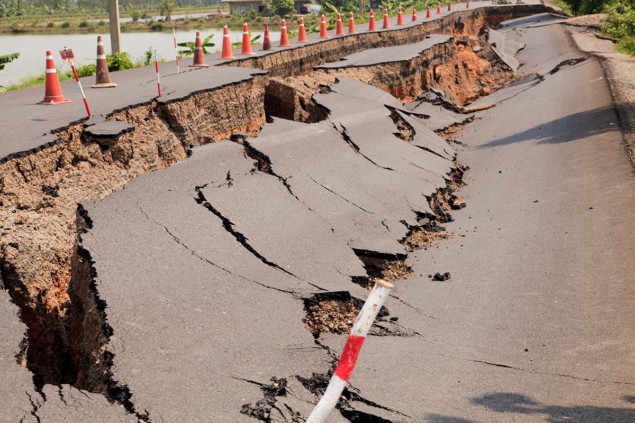
Faults, the natural fractures on the Earth’s surface that move during an earthquake, vary in roughness. Yet the influence of fault roughness on the nucleation of earthquakes has so far received little attention. Now, researchers at the University of Durham, UK, have revealed a connection between the roughness of a fault and the formation of earthquakes.
Historically, faults were believed to release energy in two possible ways: through great, destructive earthquakes, where faults get stuck and break past each other, or by aseismic “creeping”, where the faults slide past one another. But 20 years ago geologists studying the San Andreas fault in California discovered “slow-slip” earthquakes, where faults slip and release energy over days, weeks or months. Such earthquakes go unnoticed by the general population, and share characteristics of both seismic and aseismic events. The existence of these slow earthquakes has so far puzzled researchers.
Recent laboratory work by Chris Harbord and colleagues at the University of Durham has shown that the roughness of the fault can have a major impact on the processes of earthquake nucleation, as well as controlling whether a fault slips aseismically or generates a great earthquake.
By conducting experiments on a range of faults of different roughnesses, they observed a transition from seismic to aseismic slip that they believe is controlled by the stabilizing influence of increasing stress on rough parts of the fault. Furthermore, their results support observations at place boundaries, most notably subduction zones, where rough seafloor topography appears to be related to aseismic behaviour, while smooth seafloor topography is related to the nucleation of great earthquakes.
“The work shows how heterogeneity, in this case induced by structure, can be a fundamental cause of earthquakes,” Harbord commented. “Our observations indicate that it can lead to nucleation of earthquakes under conditions that are commonly viewed as unfavourable to seismicity. We also observed that increasing stress stabilizes faults, providing a different mechanism to the view that temperature is a major control on the depth distribution of earthquakes.”


